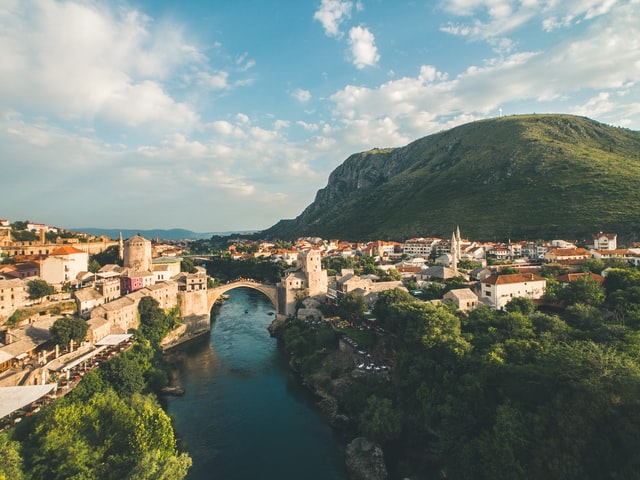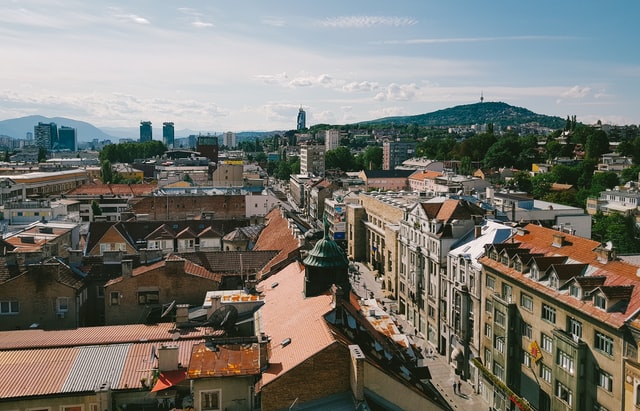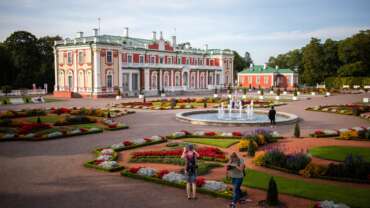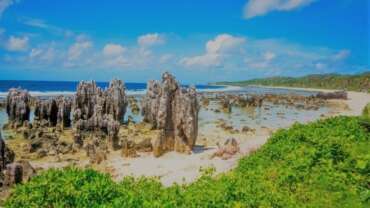Bosnia and Herzegovina - The Heart of SE Europe!
Bosnia and Herzegovina is a country on the Balkan Peninsula in southeastern Europe. Its countryside is home to medieval villages, rivers and lakes, plus the craggy Dinaric Alps. National capital Sarajevo has a well preserved old quarter, Baščaršija, with landmarks like 16th-century Gazi Husrev-bey Mosque. Ottoman-era Latin Bridge is the site of the assassination of Archduke Franz Ferdinand, which ignited World War I.
Festivals in Bosnia and Herzegovina
No matter what time of the year you choose to travel to Bosnia and Herzegovina, you’ll find something going on. Thanks in part to Bosnia and Herzegovina’s rich culture and love of celebration, there’s never a quiet moment in even the smallest of towns. You’ll find arts presentations and cutting-edge cultural commentary in Sarajevo and Banja Luka, while smaller cities offer more traditional festivals, including winter sports competitions and countless religious celebrations.
Be sure to check out Bosnia-Herzegovina’s festival schedule to choose the right time to travel there! Choose from contemporary showings and traditional events to see different sides of this diverse country.
International Sarajevo Winter Festival (February/Winter)
The International Winter Festival attracts exhibits from all over the world, including contemporary artistic presentations, concerts, sculpture exhibitions, and cultural commentary. Since its first year in 1984, this festival has become an indispensable part of life in Sarajevo. The International Sarajevo Winter Festival has received one of the highest awards possible, called “Sestoaprilska Negarda Sarajeva.”
Banja Luka Choir Gathering (April/May)
Enjoy a series of rich programs with some of the most beautiful voices in Bosnia-Herzegovina.
Kids’ Festival (June)
The biggest independent kids’ event in southeastern Europe is a great destination for a family vacation. Keep the kids entertained with cartoon films, workshops, kiosks, jugglers, dancers, and magic shows, and maybe catch a show or two yourself!
Bascarsija Nights (July)
Bascarsija Nights is one of the most notable cultural festivals to come to Sarajevo. This month-long festival is filled with 40-50 events that span anyone’s interests. Free admission and the beautiful location of this festival has added greatly to its charm over the years. Enjoy literary events, children’s programs, classical music, films, and classical opera and ballet.
Summer on the Vrbas (July)
This traditional event is held near the Kastel Fortress. What makes this festival unique is its blend of athletic events and cultural pursuits. Both artists and athletes display their impressive skills and abilities, so from kayak racing to meetings of artistic associations, there’s no way that visitors won’t find something just right.
Sarajevo Film Festival (August)
The Sarajevo Film Festival focuses on regional films, both long and short, and a variety of genres to choose from. Whether you’re a film buff or someone interested in taking in the culture of Bosnia-Herzegovina, you won’t be disappointed in this fantastic event and meeting place for artists all over the globe.
Banja Luka Summer Games (August)
Life returns to the area around Banja Luka’s historic Kastel as the Summer Games draw masses from Bosnia-Herzegovina and beyond. Enjoy a youthful spirit in the balmy city, while onlookers champion (and even rival) the outstanding athletes of Bosnia-Herzegovina’s past. As training conditions improve every year, it’s just a matter of time before Olympic gold medals flood Banja Luka again.
MESS Theater Festival (October)
This festival takes place every October, and has been since 1960. MESS, which stands for Small Experimental Stage, offers theater and modern dance performances are hand selected from all Europe. You can explore lots of creative performances that span many different cultures and languages, sometimes providing on-stage translators for specific events.
Jazzfest Sarajevo (November)
Jazzfest is Sarajevo’s jazz scene at its finest. This internationally-minded festival blends perfectly with the strong cafe culture that has regained its strength in Sarajevo. Any jazz lover should mark this festival as the perfect opportunity to experience jazz in an original, European setting.
Food in Bosnia and Herzegovina
When you travel to Bosnia and Herzegovina, be sure that you enjoy traditional dishes. Food in Bosnia and Herzegovina puts a spin on Balkan entrees and has a little something for every traveler, whether you love a good steak or you’re strictly veggie.
Appetizers
Bosnian food can be rich, but not in an unhealthy or unappetizing way. Fresh ingredients and whole foods make meals from Bosnia and Herzegovina totally appealing.
Start your day with a simple breakfast. The usual morning meal is a kwizija, or hearty meal. Stock up on a variety of small courses that include scrambled eggs and bread with a spread like jam, butter, and honey. Drink a strong, traditional coffee with a dash sweet sugar, or a cup of black tea. The feature of the breakfast is a soft white cheese straight from the farms in Bosnia and Herzegovina’s countryside.
Entrees
If you like meat and potato courses, you’ll be thrilled with the options you will find for entree selections in Bosnia and Herzegovina. Lunch is generally the largest meal of the day, so find the most intriguing restaurant in town and indulge!
Try dishes like the Bosnian bosanki lonac, a slow-roasted pot of meat and vegetables, or japrak, made up of cabbage rolls stuffed with a savory filling. If you are traveling in Mostar, try the trout, which is a specialty to the area. A buttery, flaky texture awaits, and is one option for someone who loves fish.
Dinner in Bosnia and Herzegovina is generally light. You’ll probably have it after 8:00 p.m., and for Americans and the British, this may seem quite late. Pack a snack of some Bosnian sweets to tide you over, like a tiny square of baklava, normally reserved for special occasions amongst Bosnians.
If you take advantage of Bosnia and Herzegovina’s surprisingly lively nightlife, try the Bosnian fast food called when you’re out late. This food may be fast but is actually quite traditional, dating back nearly 400 years! Your Bosnian cevaps, as they are nicknamed, will be made up of small sausages and chopped onions, folded in a pita bread called somun.
Drinks
Locally-produced wines and brandies spoil any connoisseur for choice. Sample the rakija, which is available in lots of fruit flavors like plum and grape.
Desserts
Besides the famous baklava, desserts often have fresh fruit and cream as main ingredients. Try the tufahijia, which is a delicious dessert dish made from apples filled with walnuts, and then topped with a rich layer of whipped cream. If you are partial to pudding, have the krempita, with a creamy, soft flavor similar to cheesecake. If you have room, you’ll want to try this delicious Bosnian food.
What makes Bosnian food even better is the overwhelming sense of hospitality and warmth. You’ll be offered cookies, cakes, sweets, coffee, meat platters, and cheese samplers, and once you start sampling, you won’t be able to stop. Just be sure to save room for the main course!
Bosnian Culture
Bosnia and Herzegovina is one of the most diverse countries in former Yugoslavia, and you will feel this almost immediately when you visit. In Bosnia and Herzegovina, three groups make up the greatest percentage of the population: the Bosnians, Croats, and the Serbs. You can also find Jews, Romanian, Albanians, and Turks in Bosnia and Herzegovina. With this rich blend of culture and beliefs, you’ll feel steeped in a very old and complex way of life. Enjoy it!
Home Life in Bosnian Culture
In the countryside in Bosnia and Herzegovina, families usually live in houses of brick, stone, or wood. Countryside homes were traditionally zadrugas, which were made up of several families living on a common land. Families shared the farming responsibilities to lighten the workload of farming a great deal. Today, you will still find a great community atmosphere in small villages and suburban city regions alike.
Many Bosnians are Muslims, and if you plan home visits during your travels, keep in mind that removing your shoes is regular practice in Muslim households. Slippers are generally provided by the host when you visit Bosnian homes.
Family Life in Bosnian Culture
Elders are respected in Bosnian culture and are considered extremely important members of the family. Their opinions and wishes are always handled with the utmost care.
In fact, family life in general may seem more formal, including the relationship between parents and children. Bosnian culture still maintains extended family groups, which means that the grandparents live with their adult children and care for the children while the parents are at work. Godparenting is commonly practiced, and all children are raised with values respecting their older relatives and knowing that they will most likely care for older relatives later on.
Families were affected by the war in the 1990s, which visitors should keep in mind. Some families have been broken up and are now headed by widows after husbands were lost to the conflict. In addition, different areas reached a higher concentration during the war. More people moved into cities from the countryside, where they remain today. Suburban areas became much more heavily populated in the mid-1990s, adding even more personality to these already diverse areas.
Women and Marriage in Bosnian Culture
Women usually work outside of their homes in cities and large towns. In Bosnia and Herzegovina, women have equal political and economic rights. In many families, women may be more responsible for household tasks like food shopping, household chores, and childcare, particularly in more rural Bosnian regions.
Food in Bosnian Culture
You’ll find that no matter which cuisine you choose to sample, it most likely combines delicious roasted meats, stewed vegetables, and bread in a bevy of combination. Have a traditional Bosnian stew of cabbage and meat, and burek and pida, which are layered meat and cheese pies. Try baklava, a Turkish sweet, to finish off your meal.
Bosnian Culture Tourist Tips
*In Bosnia and Herzegovina, tipping in bars and restaurants is expected. In smaller restaurants, it’s not customary but is always appreciated. Aim for 5-10% of the total.
*Use caution when discussing politics. While many Bosnians are both friendly and enthusiastic to talk about any subject, it’s recommended that you listen to political opinions and not necessarily voice yours.
The Great Pyramid of Bosnia at Visoko

Visoko means high place in Bosnian, and as soon as you visit it, you’ll see where the name comes from. This town, located northwest of Sarajevo, is located in a valley surrounded by green, rolling hills.
Visoko, with a population of 46,000 people, is thought to have been part of a Bosnian kingdom during the Medieval Period, and has several points of ancient significance hidden in the lush setting. The Visocica Hills, pyramid-like hill structures, tower 213 meters high and have been the recent focus of hot debate.
The Visocica Hills have been studied by Bosnian archaeologist Semir Osmanagic since 2005. Osmanagic, an archaeologist who specializes in pyramids around the world, was drawn to the unusual appearance of the Visocica Hills, which he believes to have all the elements of a true pyramid, including an entrance, flat top, and specific pyramid-like angles.
Their Significance
These pyramids’ significance has been the source of recent debate, which makes it even more intriguing for visitors to Bosnia today. In 2006, a series of cut stones were found underneath a massive hill construction. Osmanagic studied this pyramid hill and theorized that these Bosnian pyramids could have been as tall or taller than Egypt’s Great Pyramid of Giza. With no evidence of there ever having been pyramids in Europe, his find could be a breakthrough discovery.
Osmanagic continued by identifying two other pyramid-shaped hills located in Visoko Valley. Together, these ancient structures make up four slopes with an entrance area; similar, Osmanagic believes, to the way pyramids are grouped in Latin America.
Recent excavations have uncovered what appear to be plateaus and tunnels, but there is no conclusive evidence that the Visoko hills are, without a doubt, pyramids. Nevertheless, as excavations continue, discoveries are being made that suggest those Bosnian pyramids could be man-made after all.
How to Get There
Traveling to Visoko has gotten easier since the discovery of these strange pyramid-like mounds. While the city has retained its quiet appeal and charm, it has become much easier to visit. Park your car at their very convenient parking lots, recently constructed to manage the large influx of visitors to the town.
Besides visiting the pyramids of Visoko, you can also sightsee around this picturesque Bosnian town easily. Travel to a beautiful wooden mosque with a wonderfully decorated minaret. While war reconstruction is still being accomplished, the city still contains many red-roofed buildings typical of the area.








